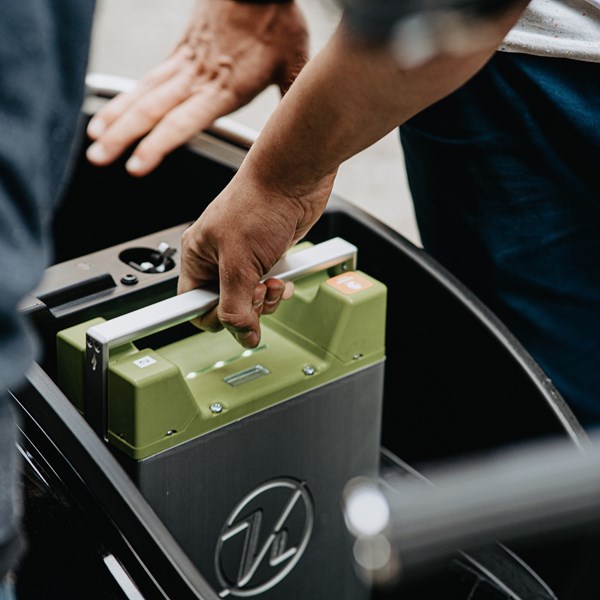A new report WIPO Technology Trends - Future of Transportation aims to drive the development of sustainable, efficient, and connected transportation systems aligned with the UN's 2030 Agenda. We take a closer look.
WHAT ARE THE MAIN PATENTING TRENDS IN TRANSPORTATION INNOVATION?
Between 2000 and 2023, over 1.1 million patent families were published that relate to the future of transportation, in general terms those relating to “two megatrends - Sustainability and Digitalization”. The compound annual growth rate, CAGR, of these patent filings - approximately 11% - is significantly above the 4% CAGR seen in patent filings for legacy transportation technologies such as combustion engines.
Notwithstanding that certain technologies can apply to more than one transport modality, most (82%) of the future of transportation patent families relate to land transport, followed by air transport (12%), space transport (7%), and sea transport (4%).
WHICH TECHNOLOGIES ARE DRIVING SUSTAINABLE TRANSPORTATION
Sustainable propulsion technologies are at the forefront of this megatrend. Relevant sub-technologies include batteries, efficient aircraft turbines, efficient ship design, electric propulsion, hydrogen/fuel cells, and sustainable fuels.
Automation and circularity technologies also play a significant role in driving sustainable transportation through enhancing operation efficiencies and minimizing waste. Example sub-technologies here include industrial robots, smart factories, battery and fuel cell recycling, and biopolymers.
HOW IS DIGITALIZATION RESHAPING THE TRANSPORTATION SECTOR?
As stated in the report:
“Communication and Security technologies are essential for the safe and efficient operation of modern transportation systems. Innovations such as lidar sensors, 5G networks, connected vehicles (V2X), and smart city infrastructure enable the real-time data exchange so crucial for the development of autonomous driving, smart traffic management and enhanced safety.”
Additionally:
“[Human-Machine Interface] technologies are transforming the way users interact with transportation systems. Advances in touch displays, speech and facial recognition and extended reality are enhancing user experience, safety and accessibility. These innovations make transportation systems more intuitive and secure, improving how individuals interact with vehicles and other transport modalities.”
WHERE IS THE MOMENTUM IN PATENTING ACTIVITY FOR TRANSPORTATION INNNOVATION?
Based on activity levels and growth dynamics, patent filings in sustainable propulsion, automation and circularity, and communication and security have the highest patent momentum for land transport. For space transport the highest patent momentum lies in communication and security filings, while for sea transport and air transport a medium or low patent momentum is seen in patent filings across the main technology trends summarised above.
WHAT ARE SOME EMERGING TECHNOLOGIES IN TRANSPORTATION?
According to the report, the number of published patent families for solid-state batteries, SSBs, has grown from 290 in 2010 to over 2000 in 2023. While SSBs show promise in enhancing performance and safety over traditional battery technology, challenges remain in areas include commercial-scale production.
Other emerging technologies identified in the report include:
- Platooning, or enabling multiple vehicles to travel closely together at high speed via automated driving systems and vehicle-to-vehicle communication.
- Smart ports, which leverage innovations including advanced automation, data analytics, and IoT to improve logistics efficiency and support decarbonisation.
- Ammonia as a sea fuel – patenting activity has picked up “From only 33 patent families in 2020 (…) to over 200 by 2023.”
- Sustainable aviation fuels such as biofuels, alcohol-to-jet fuel, and power-to-liquid (using renewable electricity to convert (CO₂) and water into synthetic fuels).
- Urban air mobility. The report identifies “battery technology, flight safety and noise reduction” as example technical limitations.
WHAT DOES THE FUTURE HOLD?
As evidenced by the report’s findings, transportation innovation encompasses a diverse range of technologies that collectively support greener, safer, smarter, and more connected transportation systems. Looking beyond patents, it is apparent that transportation innovation is also creating new opportunities in branding and consumer appeal.
The momentum in innovation on future transportation technologies is unlikely to slow down any time soon. For this reason alone, intellectual property rights – backed by a strategy intrinsically linked to a business plan – will remain vital for innovators seeking to maximise the commercial value of their transportation innovations.
To find out more about how intellectual property can help you create commercial value from your transportation innovation, please feel free to contact us.






